
Exercise Report : FALCON EYE-1 - Souda, Greece
Exercise FALCON EYE-1 - Saudi Eagles at Souda
In mid-March 2021, the Royal Saudi Air Force (RSAF) deployed six F-15 fighters to Souda Air Base on the Greek island of Crete for a joint exercise, called Falcon Eye-1, with the Hellenic Air Force (HAF). Report and photos by George Karavantos
First HAF/RSAF bilateral exercise
From 16 until 26 of March, 2021, the Hellenic Air Force hosted the bilateral exercise named Falcon Eye-1 with the Royal Saudi Air Force at the base of 115 Combat Wing in Souda, home of the Greek F-16 Block 52+s operated by 340 Squadron (Fox) and 343 Squadron (Star).
The Saudi F-15 Eagles arrived at Souda on March 13 to stay until their departure on the 28th. There were five F-15C (209, 210, 213, 214, and 215) plus one F-15D (231). All six F-15 Eagles were coming from the 2nd Squadron of the 7th Wing based at King Faisal Air Base in Tabuk.
Before and after the exercise a number of supporting Saudi aircraft visited the base to bring in and extract the necessary support equipment and personnel. Most of them were C-130Hs belonging to the 4th Squadron and 16th Squadron of the 8th Wing based at Prince Abdullah Air Base in Jeddah. An A330MRTT, belonging to the 24th Squadron of the 6th Wing based at Prince Sultan Air Base in Al Kharj, was also utilised for the Eagles’ long trip to Greece and back.
On each exercise day there were two waves of fighters, one during the morning and one in the afternoon. Each time, both Greek squadrons were launching 4-5 fighters each, along with 4 of the Saudi F-15s.
The exercise's scenarios were focused mainly on air-air engagements with Air Superiority / Supremacy missions, since the F-15C Eagles of the RSAF are specialized in this role, but some strike missions were also planned and performed against some high value ground targets. The HAF cooperated also with the Hellenic Navy and some of the missions included simulated strikes against frigates, as high-value asset targets.
During the exercise the Saudi aircraft were not only training with the F-16s of 115 Combat Wing, but also with other aircraft of the Hellenic inventory. HAF F-16s from other Greek bases along with Mirage 2000s and F-4 Phantoms II fighters were involved in various scenarios over the Aegean Sea and air defense, close air support, and ground attack missions over the mainland.
Col. Abdulrahman Al-Shehri, commander of the RSAF detachment said the exercise was exceptional and unique of its kind. “The Hellenic Air Force was able to refine and develop the technical skills of our air crews who exchanged experiences in all available fields”, he added.
Greece is the perfect place for hosting such exercises since its rough terrain in combination with the Aegean Sea offers a great landscape for mission planners and crews to simulate different kinds of scenarios. Also, there are no densely populated areas and no competing air traffic to compromise the realism and the quality of training. Another encouraging factor is the excellent weather of Greece which offers the ability to fly and train at all altitudes.
On the 19th of March, a ‘Distinguished Visitors’ (DV) Day took place, attended by the Greek and Saudi Chiefs of National Defense General Staff, General Konstantinos Floros and General Fayyad bin Hamed Al-Ruwaili who visited Greece for the first time.
It is no secret that the Hellenic Government is seeking out this kind of military cooperation also with other countries of the region like Israel, Egypt, United Arab Emirates to display a unanimous position towards its neighbor Turkey. It is not a coincidence that the HAF hosted similar exercises with UAE Air Force last October (also at Souda), with the French Air Force in February, and while exercise Falcon Eye-1 was taking place, the Greek fighters were also flying training sorties with F/A-18Es from the USS Dwight D. Eisenhower, which was deployed to the Aegean Sea. In fact, during the final day of the exercise, the aircraft carrier visited Souda Bay for a few days.
Relevant to the above was a statement that General Konstantinos Floros made: “The important presence of the Saudi Armed Forces in Souda is added to, among others, those of the United Arab Emirates, France, US and Cyprus. It highlights the important role of Crete in consolidating security and stability in the wider region of the Central and Eastern Mediterranean, as well as the Middle East".
Saudi F-15s
Starting in the early 1980s, Saudi Arabia has received more than 220 F-15 fighters and has become the third largest operator of the type after the United States and Japan. The Saudi Arabian government at Riyadh initially ordered 47 F-15Cs and 15 F-15Ds under the Foreign Military Sales program Peace Sun, as replacements for the BAC Lightning interceptor. The first deliveries provided 46 F-15Cs and 16 F-15Ds, for a total of 62 aircraft; the US Congress had initially specified that the Saudis should have no more than 60 Eagles, but two were lost in accidents, and replacements were provided.
The delivery of these 62 Peace Sun F-15C/Ds took place from January 1982 to May 1983 and were supplied to the 5th Squadron at King Fahad AFB in Taif, the 6th Squadron at King Khaled AFB in Khamis Mushayt, and to the 13th Squadron at King Abdul Aziz AFB at Dharan. In October 1987, a supplementary order for 12 more F-15s (nine C, three D) under Peace Sun VI was signed and the deliveries took place in late 1991 until February 1992. During the Gulf War, the original limitation was lifted and another 24 F-15C/Ds had also been transferred from the USAF in Europe to build up the Saudi fighting strength. Some sensitive countermeasures gear was removed from these aircraft before delivery.
Following the Gulf War, the Saudis were looking for more F-15 fighters. McDonnell Douglas proposed several versions of the Strike Eagle (the F-15F or the F-15H) which were rejected by the U.S. Congress. At the end, the Congress gave the green light to another version, designated F-15XP, which first flew on 10 May 1993, and became the F-15S (Saudi).
The F-15S is a two-seat aircraft based on the F-15E airframe, with downgraded avionics and simplified Hughes APG-70 radar without computerized radar aperture. Still the new fighter was highly capable in air¬-to-ground capability compared to that already possessed by the Saudi Air Force. The F-15S also had a self-defense suite, albeit downgraded. The Saudis did obtain 48 sets of a simplified version of the LANTIRN pod system, featuring the AN/AAQ-19 Sharpshooter targeting pod and the AN/AAQ-20 Pathfinder navigation pod.
The F-15S deliveries started in 1995 and on November 10, 1999, the last of 72 F-15S aircraft was handed over to Saudi Arabia. In 2009, the Saudis ordered Lockheed Martin Sniper Advanced Targeting Pods to replace the LANTIRN targeting pods used on the F-15S.
On December 29, 2011, the Kingdom of Saudi Arabia announced that it had reached an agreement with the US government to purchase 84 new Boeing F-15SA aircraft and to upgrade 68 of its existing F-15s (later on reduced to 66 due to losses).
The new F-15 aircraft for Saudi Arabia was designated F-15SA, which stands for Saudi Advanced. It had a new fly-by-wire flight control system in place of the hybrid electronic/mechanical system used by previous F-15s. The F-15SA includes the APG-63(V)3 active electronically scanned array (AESA) radar, digital electronic warfare systems (DEWS), and infrared search and track (IRST) systems. The aircraft has two additional wing stations for increased payload and capability. It also had a redesigned cockpit once intended for the stealthy F-15SE Silent Eagle.
The first of the 150 Boeing F-15SA Eagle fighters arrived in the Kingdom on December 13, 2016, when the initial four aircraft, comprised of two re-manufactured F-15S (93-0857 and 93-0899) and two new-built F-15SAs (12-1006 and 12-1010) arrived at King Khalid Air Base. Deliveries of the 84 new-built and 66 re-manufactured F-15SAs were originally scheduled from 2015 through to 2019, but development problems pushed this schedule back by about a year.
For more than four decades now, the F-15 Eagle has been the mainstay in the inventory of the Royal Saudi Air Force. The Air Force operates not only some older, but still capable, F-15C/Ds approaching retirement, but also many highly capable modern F-15SA fighters with many years of service remaining, until the RSAF selects and fields a 5th generation fighter.
The author would like to thank Lt. Col Rashed Alaboudi (Saudi Military Attaché) for making this article possible and Lt. Georgios Mazanakis for his help.
Report and photos by George Karavantos ( view portfolio )
Last Modified: 5 May 2021

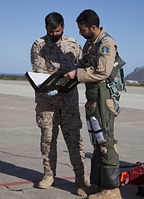


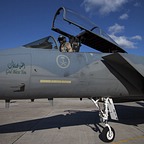
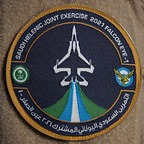
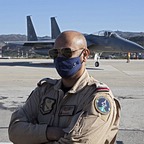

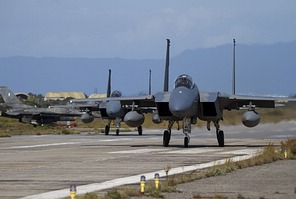





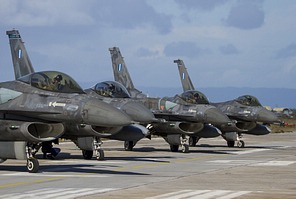


















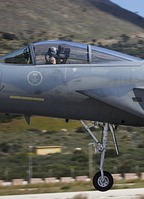




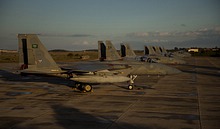
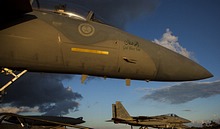
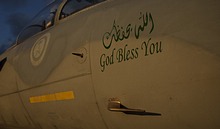
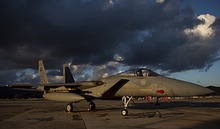






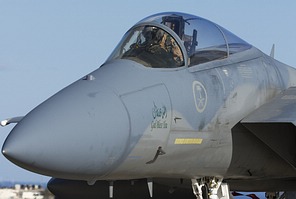






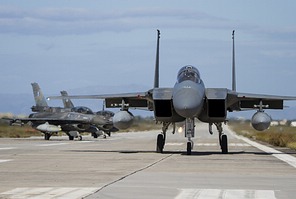








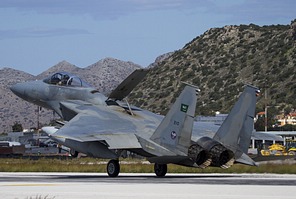

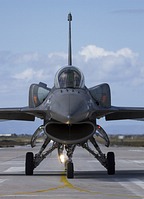
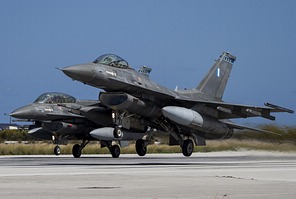





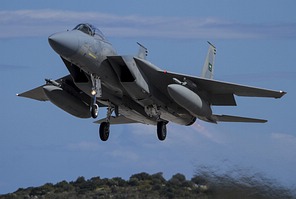

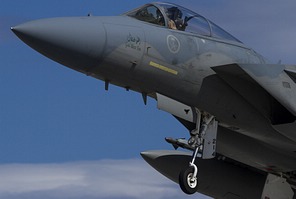
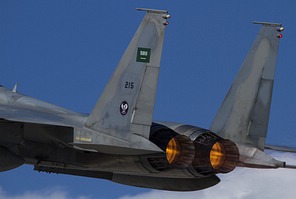


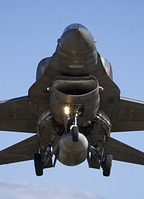



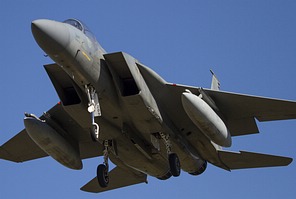


 Back to Index
Back to Index